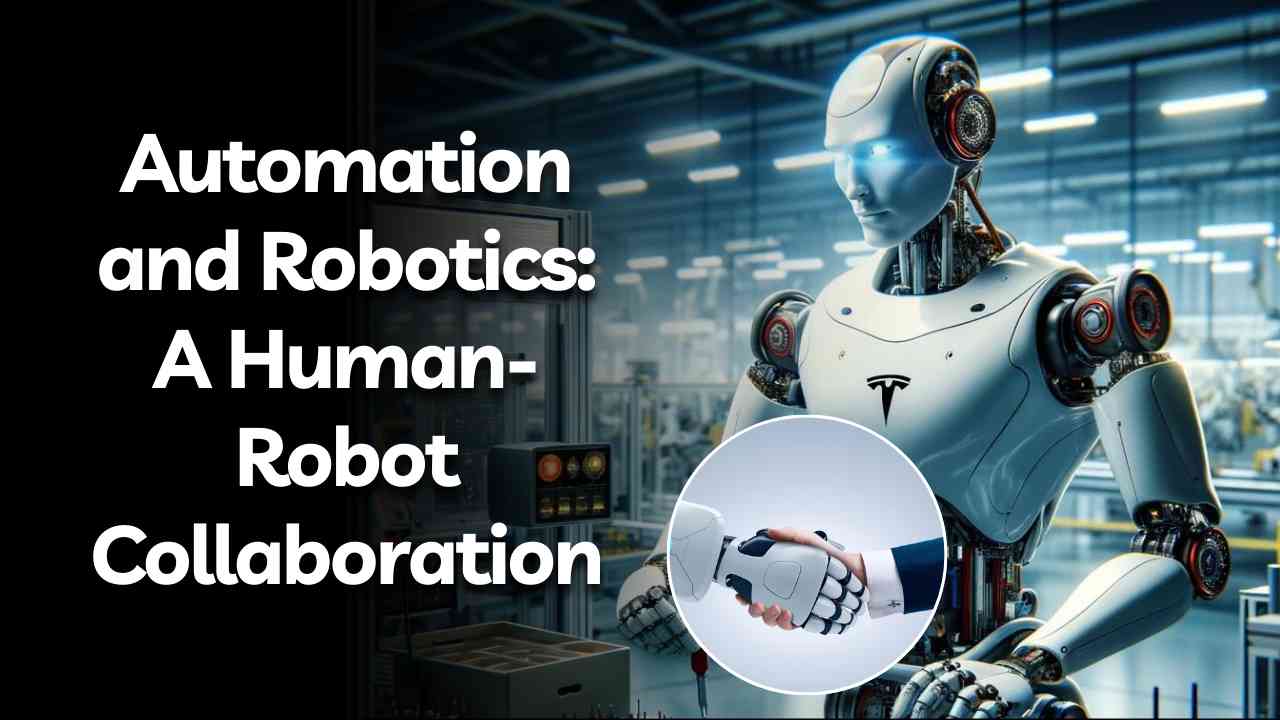In today’s rapidly evolving technological landscape, two groundbreaking innovations stand out: automation and robotics. These transformative technologies are reshaping industries, redefining job roles, and revolutionizing the way we work, manufacture goods, and deliver services. At their core, automation and robotics represent the epitome of human ingenuity and engineering prowess, offering unprecedented levels of efficiency, precision, and productivity across diverse sectors.
Automation

Automation is the process of using technology to perform tasks with minimal human intervention. Through the integration of software, sensors, actuators, and control systems, automation streamlines processes, reduces cycle times, and optimizes resource utilization in manufacturing, logistics, healthcare, and beyond. Sensors detect changes in the environment, actuators translate electrical signals into physical movement, and control systems orchestrate the seamless operation of automated systems with unparalleled accuracy and efficiency.
Robotics

Similarly, robotics—the branch of technology dedicated to the design, construction, and application of robots—has emerged as a transformative force in various fields. Robots, programmable machines capable of performing tasks autonomously or under human supervision, have revolutionized industries ranging from automotive and electronics to healthcare and agriculture. Industrial robots weld, paint, assemble, and handle materials on assembly lines with unparalleled precision, while surgical robots assist surgeons in complex medical procedures, enhancing patient outcomes and reducing human error.
Real World Applications of Automation and Robotics

The applications of automation and robotics are as diverse as they are profound. In manufacturing, automation and robotics enable mass production, flexible manufacturing processes, and just-in-time inventory management. In logistics and warehousing, automated guided vehicles (AGVs) and robotic arms optimize order fulfilment, inventory tracking, and distribution in e-commerce and retail operations. In healthcare, surgical robots, rehabilitation robots, and robotic exoskeletons revolutionize patient care, enabling minimally invasive surgeries, personalized treatments, and rehabilitation therapies.
The advantages of automation and robotics are manifold. Increased efficiency, improved safety, and cost savings are among the key benefits driving the adoption of these technologies. Automation streamlines processes, reduces human error, and enhances productivity, while robots perform hazardous, repetitive, or physically demanding tasks in environments where human safety is a concern. Moreover, the long-term cost savings associated with automation and robotics outweigh the initial investment, making them indispensable assets in today’s competitive market landscape.
However, the integration of automation and robotics is not without its challenges and considerations. Organizations must carefully evaluate the return on investment (ROI), address integration and compatibility issues, and invest in skills development and training to harness the full potential of these technologies. Moreover, ethical and social implications, such as job displacement, worker safety, and the ethical use of AI and autonomous systems, must be carefully considered to ensure that technology serves as a force for positive change and inclusive growth.
Also Read – Escape Reality with AR and VR



